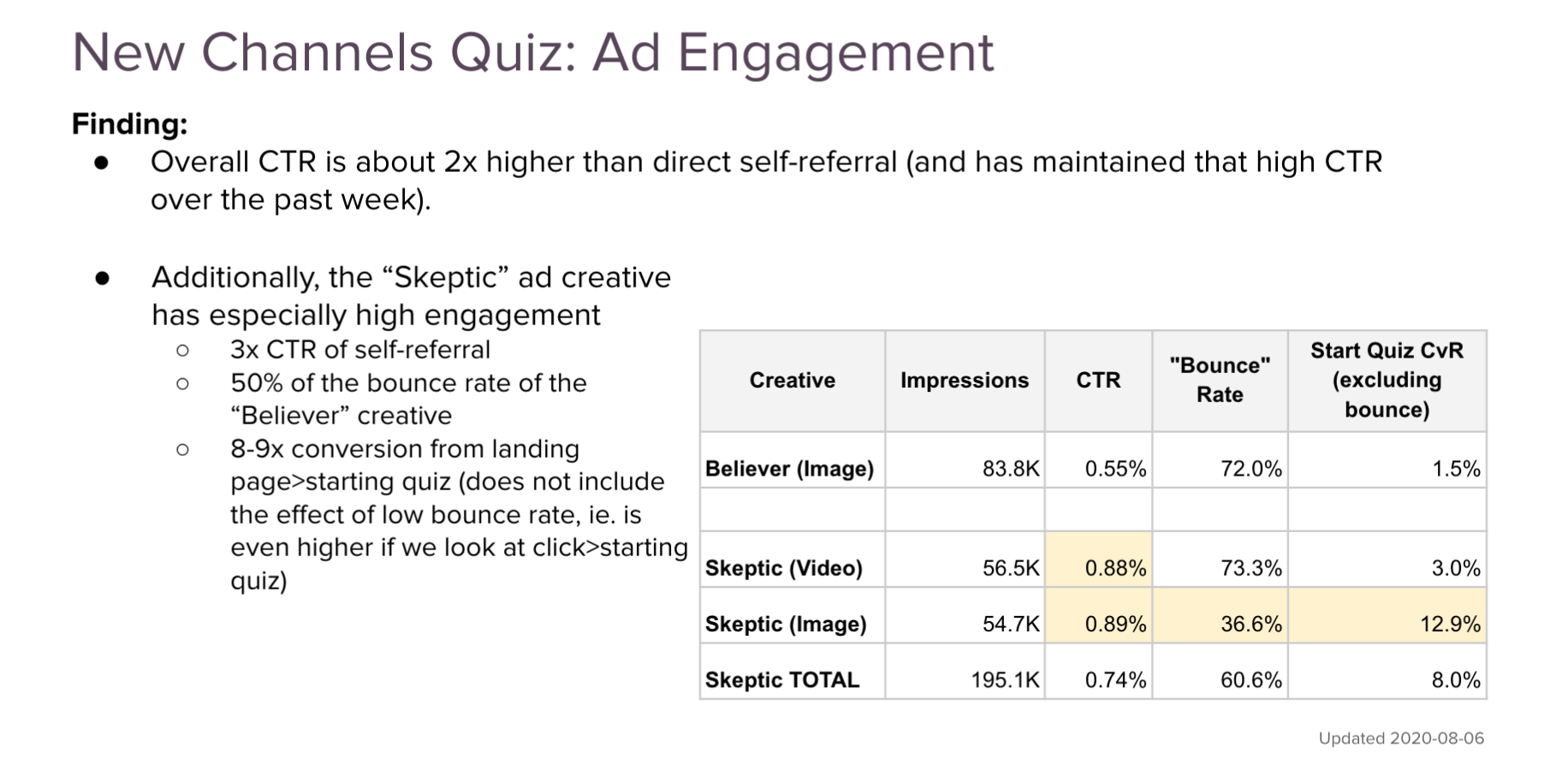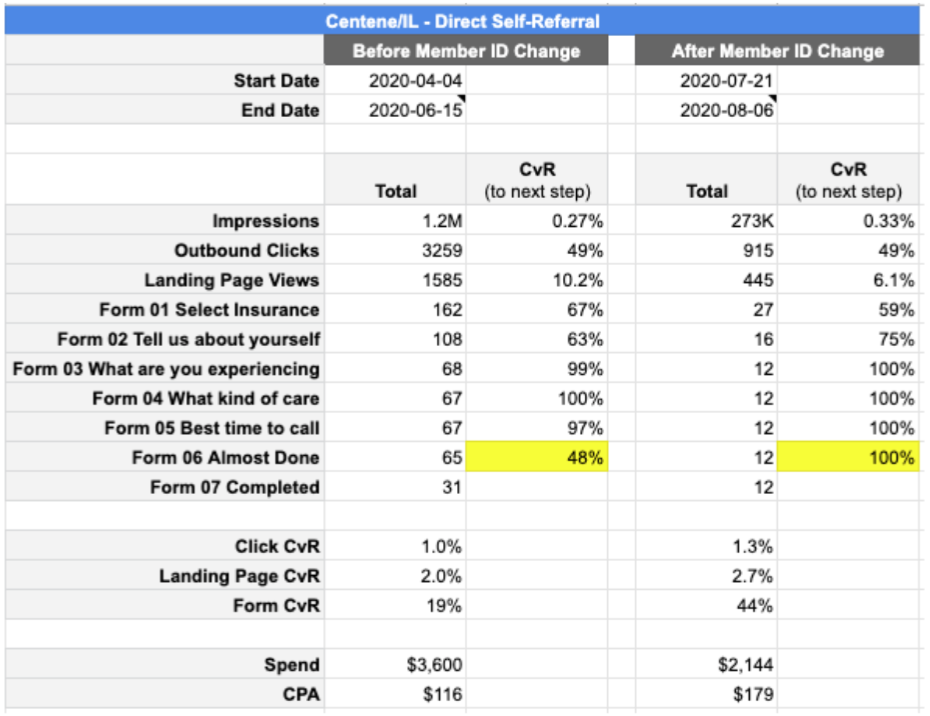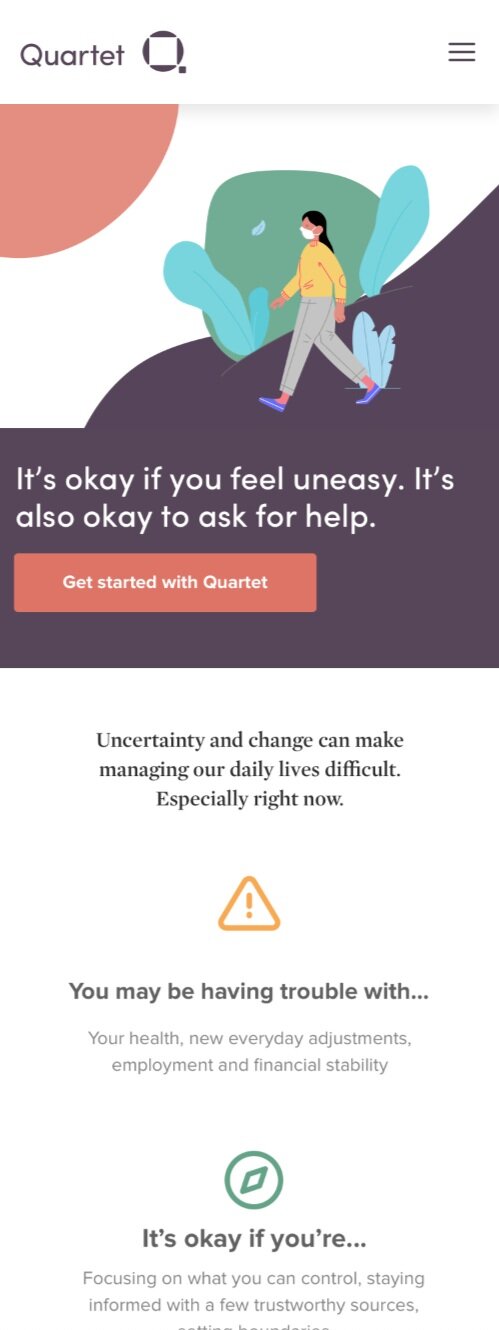Mission Possible, part 1
Making Lemonade from Lemons
For a design research effort in Q3 of 2019, the team wanted to speak directly to high need customer patients that were identified using Quartet’s algorithm applied to customer data.
The customer in question was not comfortable with Quartet using email or phone numbers that were provided to us to do direct recruitment for research. This was a challenging blocker for the research team, but a collaborative session with the marketing team led to a new idea, which eventually led to a company-changing initiative. The idea was to use social media as a medium to outreach across the customer market to see who would be interested in participating in research, then cross reference respondents with our database of high need customer patients. The outcome was overwhelmingly positive, and served as proof of concept for piloting a new direct-to-member activation channel, codenamed Mission Possible. This pilot eventually resulted in a significant pivot in Quartet’s patient acquisition strategy.







Mission Possible Kickoff
The process of matching a patient to a mental health resource is cross-functional, so in order to understand how to roll out this pilot across the organization, I planned and facilitated a workshop with representation from the product, marketing, clinical, and care navigation teams. I prepared a happy path from facebook through appointment attendance which we reviewed as a group, making edits. Teammates raised questions or issues they saw which the group would need a plan to overcome. Lastly we identified work streams and owners who were responsible for assembling a team to execute and driving the work forward.




The product and design team members dove into articulating the patient journey, with help from the clinical and care navigation teams.






Facebook Ads
The original ads tested four concepts against each other. All three ended up with ~.33% CTR. Later in the year, the team saw much success in diversifying the ad medium, to include carousels and videos. These formats had improved reach as well as CTR. The team also used our mental health decision making personas to test out content aimed at each of the personas, and saw great success with one in particular, “the skeptic.”
There were many experiments with ad content and copy throughout the year. In one experiment, the team tested out content aimed to resonate with each of our mental health decision making personas, and saw great success with one in particular. Creative aimed at “the skeptic,” saw a .88% CTR as well as a bounce rate of only 36.6%, as compared to the second-best performing persona ad creative, which had a CTR of .55% and a bounce rate of 72%.
Original Landing Page and Self-Referral Flows
After much collaboration across product, design, clinical, and care navigation around what information must and should be collected, the care request form content and design was finalized and launched.
Through analytics, the team identified two drop off points: “Tell us a little bit about you” and the insurance member ID field. To address these areas of friction, in a subsequent iteration the “Tell us…” section was moved to the end of the flow on the hypothesis that patients would be less likely to drop off at this point after they have already provider information about the care need. Working with data science and care navigation, the team was able to remove the member ID as a required field, and conversion on that page jumped from 48% to 100%. Moving the “Tell us” page to the end of the flow resulted in a jump of 10-15 percentage points depending on the campaign that brought the user to the form.
User Feedback
As quantitative data was collected during the pilot phase, the design and research team also collected qualitative feedback. The research goals were:
Gain insights about the similarities and differences between patient needs and perception of Quartet’s value in our different markets.
Learn more about how people make decisions regarding their MH care and build on our personas.
Get participant feedback on our products and concepts for new features.




Iterations on a Successful Pilot
In early September, the team launched v2 of the self-referral product, having learned from the pilot itself and from user interviews. The redesigned landing page and form were also updated to match the new corporate brand guidelines.
2020 Metrics
Due to the success of the Mission Possible pilot to activate patients in a scalable and significantly lower cost per acquisition (as compared to provider-led channels), Quartet is aiming to have 50% of all activations via self-referral by the end of 2021. To support the company in this overall pivot to a direct-to-member corporate strategy, I worked with the VP of Product Strategy to articulate a 2-3 year vision for the patient experience that builds on the Mission Possible pilot. Please see the “Mission Possible: Future Vision” for more details.
























